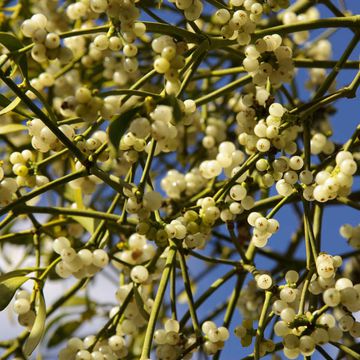Mistletoe
Scientific name
: Viscum album
Other names:
Azərbaycanca: Ağ öksəotu
,
Български: Имел
,
Català: Vesc
,
Česky: Jmelí bílé
,
Dansk: Almindelig Mistelten
,
Deutsch: Weißbeerige Mistel
,
Español: Muérdago blanco
,
Basque: Mihura
,
Suomi: Misteli
,
Français: Gui
,
Magyar: Fehér fagyöngy
,
Italiano: Vischio
,
日本語: ヤドリギ
,
한국어: 겨우살이
,
Lietuviškai: Paprastasis amalas
,
Latviešu: Baltais āmulis
,
Nederlands: Maretak
,
Norsk (nynorsk): Misteltein
,
Norsk: Misteltein
,
Polski: Jemioła pospolita
,
Português: Visco Hardwood
,
Română: Vâsc european
,
Русский: Омела белая
,
Slovensky: Imelo biele
,
Slovenščina: Bela omela
,
Svenska: Mistel
,
Türkçe: Ökse otu
,
Tiếng Việt: Cây tầm gửi Châu Âu
Short Description
Mistletoe is commonly found growing in poplar, willow, hornbeam, black locust, oak, chestnut, and fruit trees (particularly apple trees). Mistletoe berries are popular in decorating and have a spherical appearance with sticky pulp. Mistletoe contains a complex mixture of many ...
Author: Bruno P. Kremer
Discover this and other species in our apps
